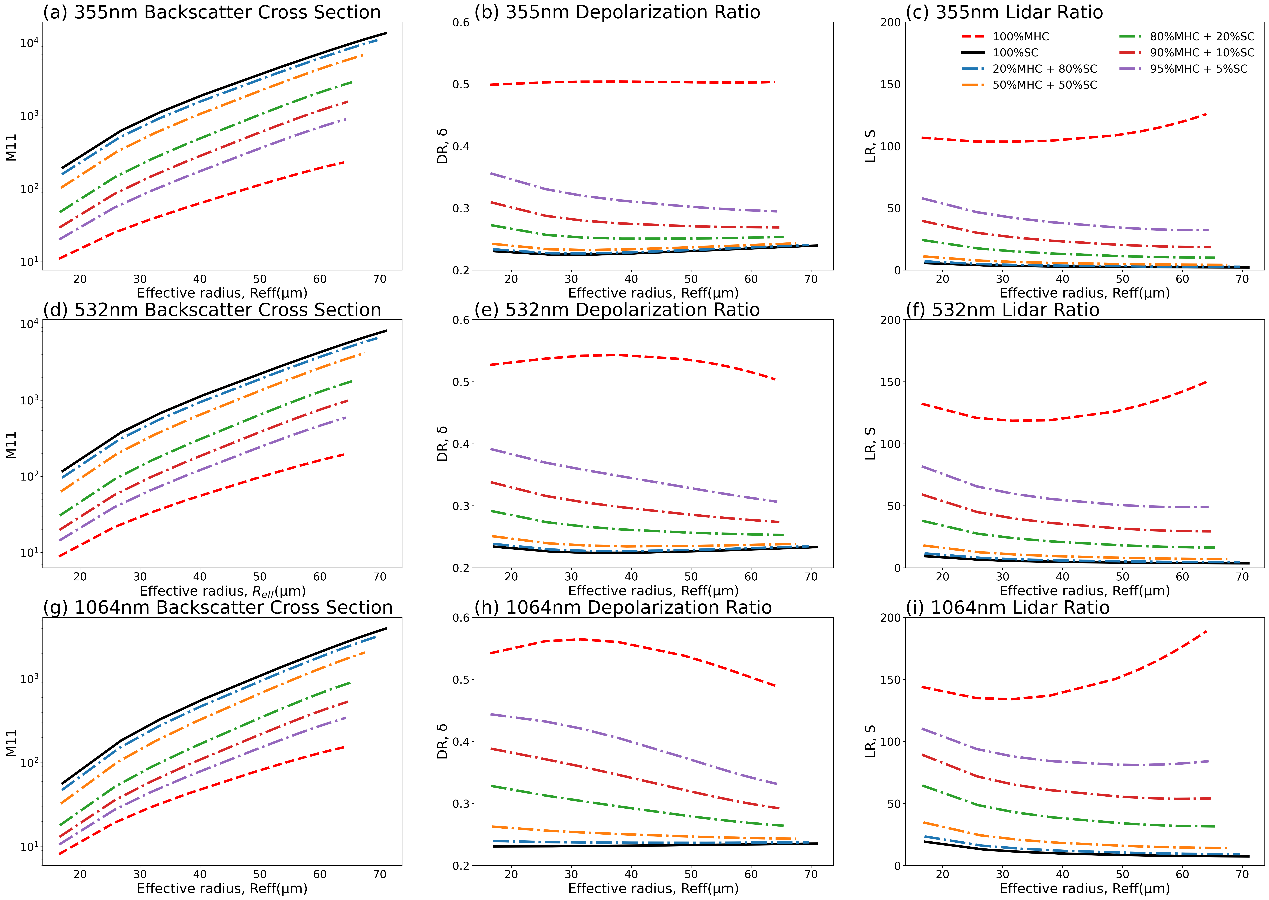Cirrus is one of the key factors affecting the radiation budget balance of the earth-air system. In order to meet the requirements of the earth-air system model, it is necessary to conduct in-depth research on the microphysics of cirrus. Previous lidar detection experiments often ignored the hollow ice crystals in cirrus clouds, but more than 50% of the hollow columns in the real atmosphere were captured by the Cloud Particle Imager (CPI).
In this research, the team employed the physical optical approximation (PO) framework to calculate key parameters. Scientists established a "modal hollow columns" (MHC) for the first time, and this novel concept was suitable for mid-latitude regions to adapt to the description of hollow ice crystals in nature.
The research revealed significant findings. When the mixing ratio of MHC to solid columns (SC) reaches 50% or more, it becomes possible to be distinguished based on the lidar ratio of 1064nm wavelength, the color ratio of 1064/532nm and the depolarization ratio of 532nm. Also the precise microphysical parameters can be obtained further.
The incorporation of hollow column data into existing databases is a crucial step towards improving the precision and reliability of future lidar measurements, according to the team.

Backscattering properties of randomly oriented columns (Image by ZHU Xuanhao)

